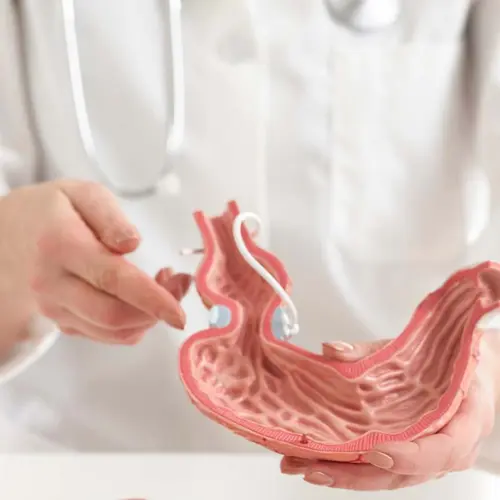Table of Contents
Cancer treatment is one of the most important areas of modern medical technologies. Today, the treatment of patients is becoming more effective thanks to various assistive devices and technologies used in cancer treatment. These assistive devices are used in surgery, radiation and chemotherapy stages of cancer treatment. These assistive devices and their intended use in cancer treatments are described in the sub-headings below.
Radiation Therapy and Assistive Devices
Radiation therapy is a common way of treating cancer. This treatment uses high-energy rays to kill cancer cells. However, radiation therapy can also damage healthy tissues in the body. Therefore, assistive devices used in radiation therapy can help direct the beams more accurately at cancer cells and minimize damage to healthy tissues.
Linear Accelerator (LINAC)
This device is used to accelerate high-energy electrons that produce beams of radiation. These beams are then directed at cancer cells.
CT Simulator
This device is used during radiation therapy planning. It takes a CT scan of the patient's body and creates a 3D image. This image is then used for radiation therapy planning.
Advanced Dosimetry Systems
These devices help to precisely measure and record radiation doses. This allows radiation dosage to be controlled and minimizes damage to healthy tissue while targeting cancer cells.
Frameless Stereotactic Radiosurgery (SRS)
This device is used to treat small cancers such as brain tumors. It delivers ionizing radiation therapy and is directed directly at the cancer cells.
Radioactive Iodine
This device is used to treat thyroid cancer. Radioactive iodine is injected into the thyroid gland and cancer cells are targeted.
When using these assistive devices during radiation therapy, a different treatment plan must be applied for each patient. Therefore, a specific radiation therapy plan should be prepared for each patient.
Imaging Devices in Cancer Treatment
Imaging devices used in cancer treatment are used to find cancer cells, plan treatment, monitor the effectiveness of treatment and detect disease recurrence.
Computed Tomography (CT) Devices
These devices use X-rays to create cross-sectional images of the body's internal structure. These images can be used to detect areas where cancer cells are present.
Magnetic Resonance Imaging (MRI) Devices
These devices create detailed images using magnetic fields and radio waves. MRI can be used to find cancer cells, measure tumor size and stage cancer.
Positron Emission Tomography (PET) Devices
PET is an imaging technique used to find cancer cells by injecting radioactive material. The radioactive material is absorbed by the cancer cells and detected by the PET device. This can help to find cancer cells and detect their spread.
Single Photon Emission Computed Tomography (SPECT) Devices
SPECT is an imaging technique used to find cancer cells by injecting radioactive material. The radioactive material is absorbed by the cancer cells and detected by the SPECT device. This helps to find cancer cells and detect their spread.
These imaging devices play an important role in cancer treatment. Thanks to these devices, cancer cells can be detected earlier and treatment can be planned more effectively.
Surgical Devices Used in Cancer Treatment
Surgical devices used in cancer treatment are used to remove cancerous tissues or to rebuild them after radiation therapy. These devices play an important role in cancer treatment and allow surgeons to intervene in cancerous tissues in the most accurate and precise way.
Robotic Surgery Systems
These devices contain precision robotic arms that increase surgeons' access to cancerous tissues. These devices allow surgeons to control their movements and perform a less invasive intervention during the removal of cancerous tissues.
Laparoscopic Surgery Devices
These devices contain a long, thin tube that allows surgeons to access cancerous tissues through a small incision. It allows surgeons to perform a less invasive intervention for the removal of cancerous tissues.
Electrocautery Devices
Electroker devices are used to reduce bleeding during the removal of cancerous tissues. These devices produce an electric current that is used to burn or cut cancerous tissues.
Laser Surgical Devices
Laser surgical devices produce a laser beam that is used for the removal or repair of cancerous tissues. These devices provide accurate and precise access to cancerous tissues with minimal damage to surrounding healthy tissues.
Microscopic Surgery Devices
Microscopic devices have a microscope that allows surgeons to perform precise interventions during the removal of cancerous tissues. These devices ensure precise removal of cancerous tissues and minimal damage to surrounding healthy tissues.
Chemotherapy Pumps
Chemotherapy pumps ensure the controlled delivery of chemotherapy drugs used in cancer treatment into the patient's body. These devices ensure that the chemotherapy drug is correctly distributed throughout the patient's body and side effects are minimized.
The treatment method to be chosen for cancer treatment and the devices to be used in this treatment method are selected by specialist doctors. The history of the disease, the patient's age and current health status are factors that influence the selection of the relevant methods and devices.




















